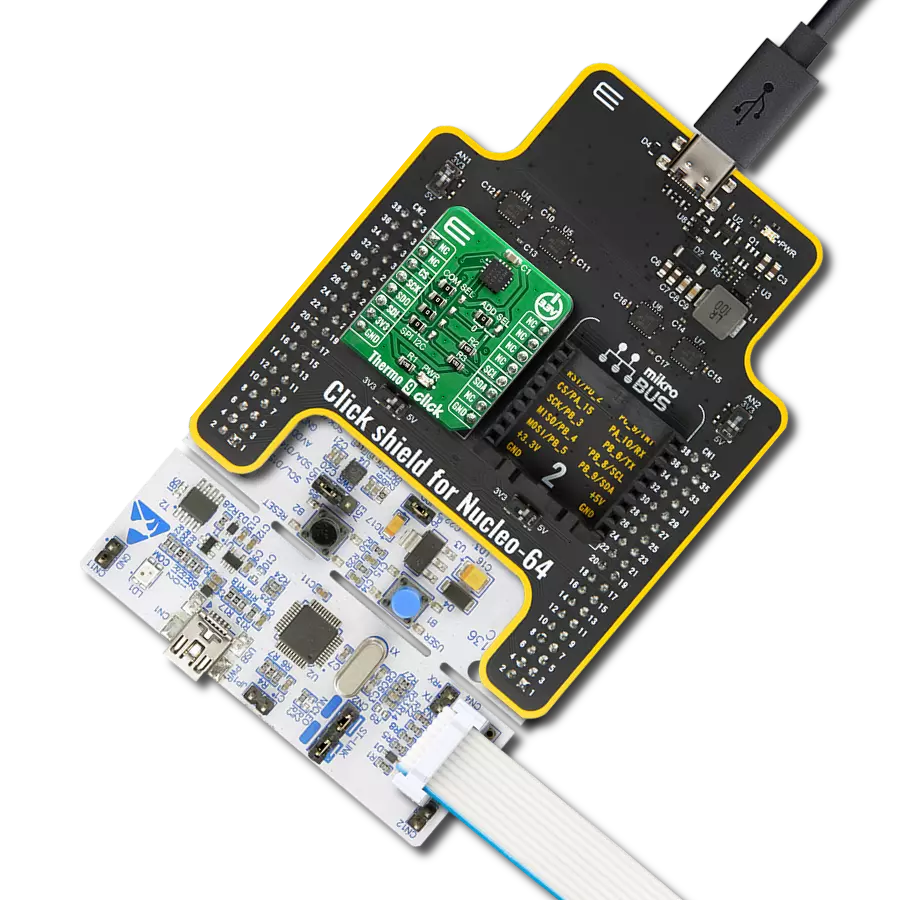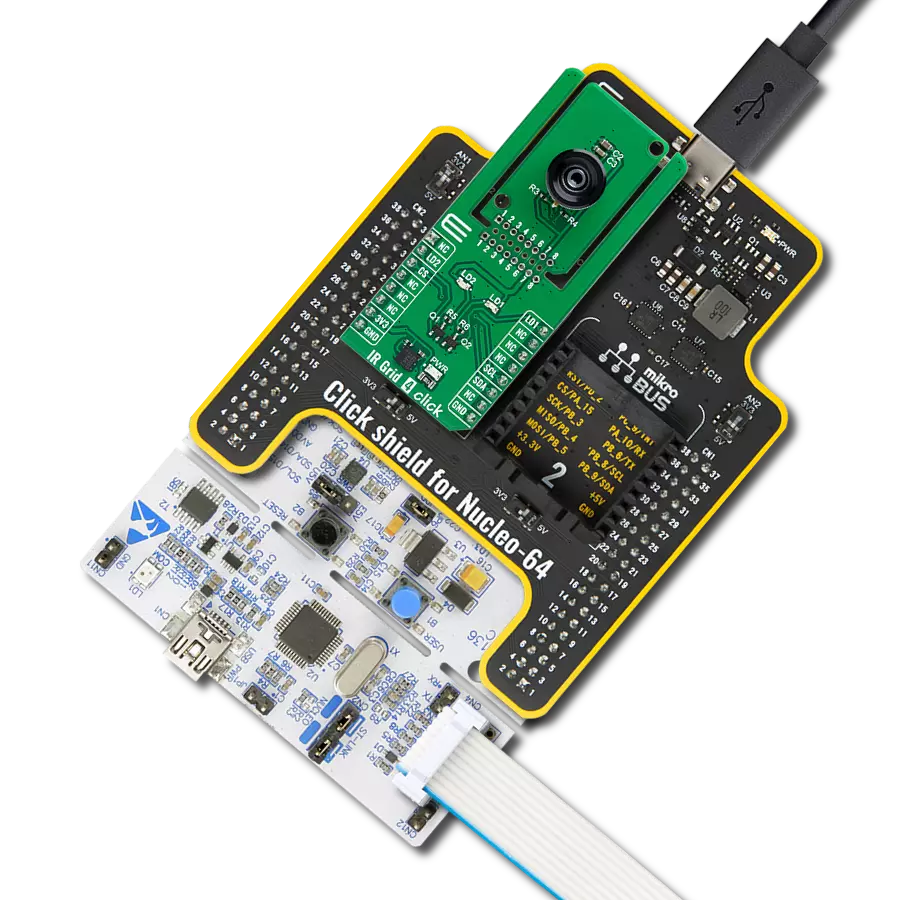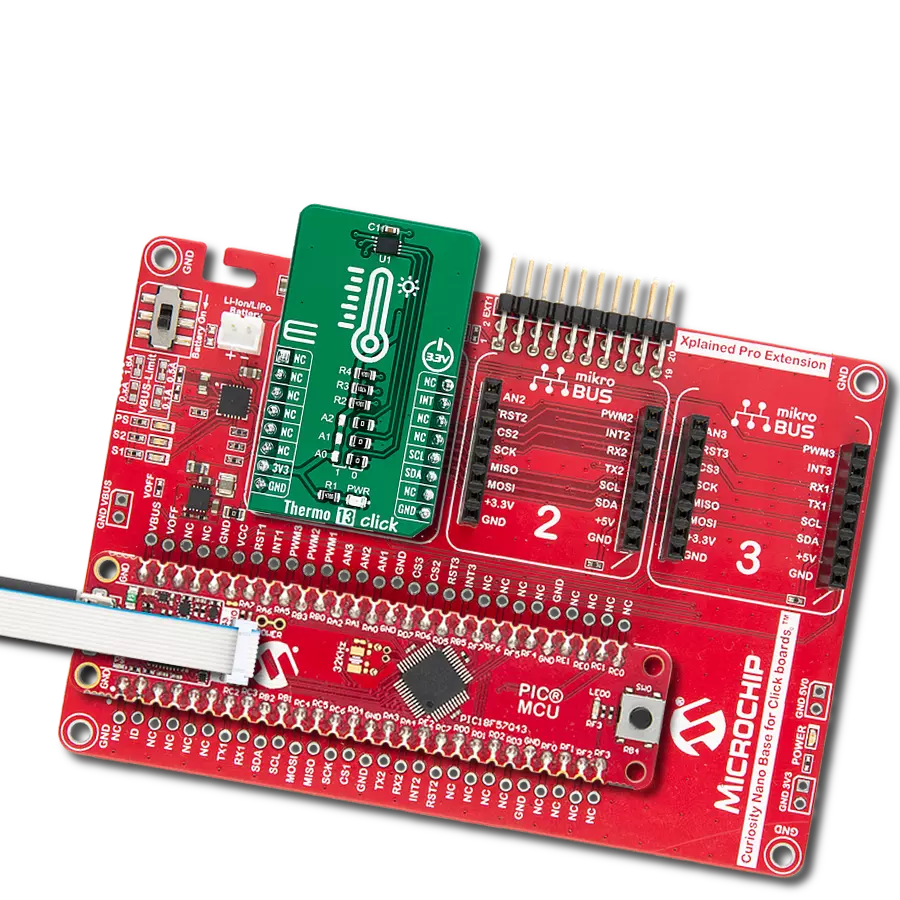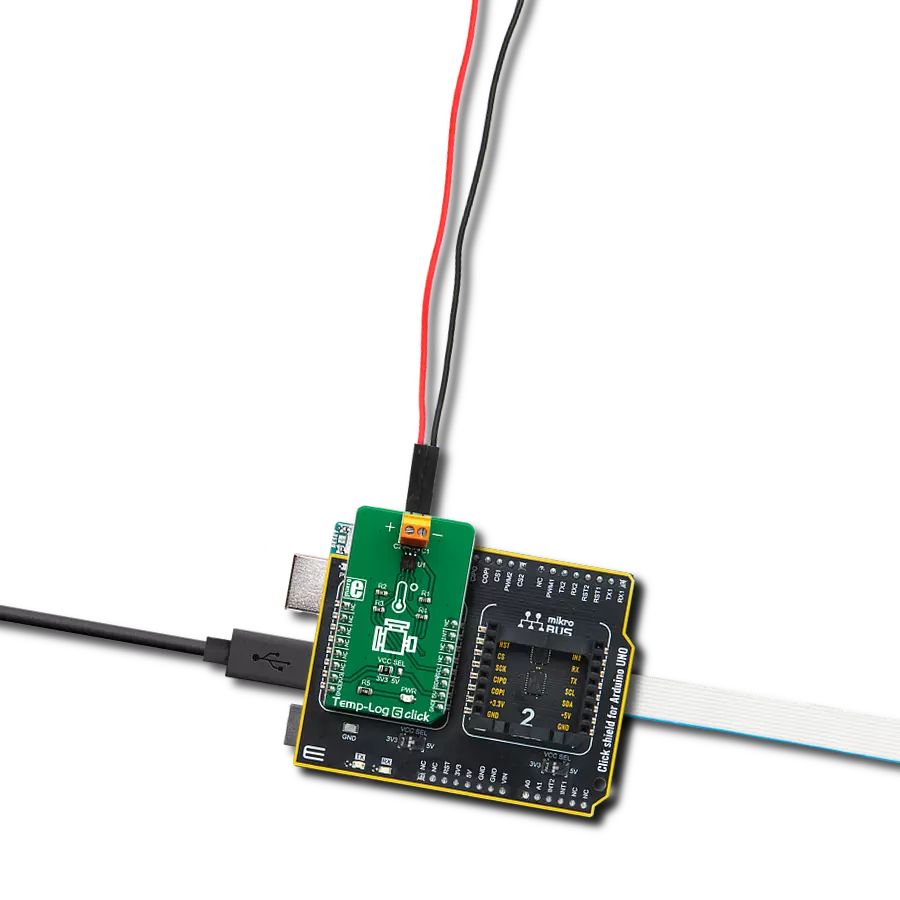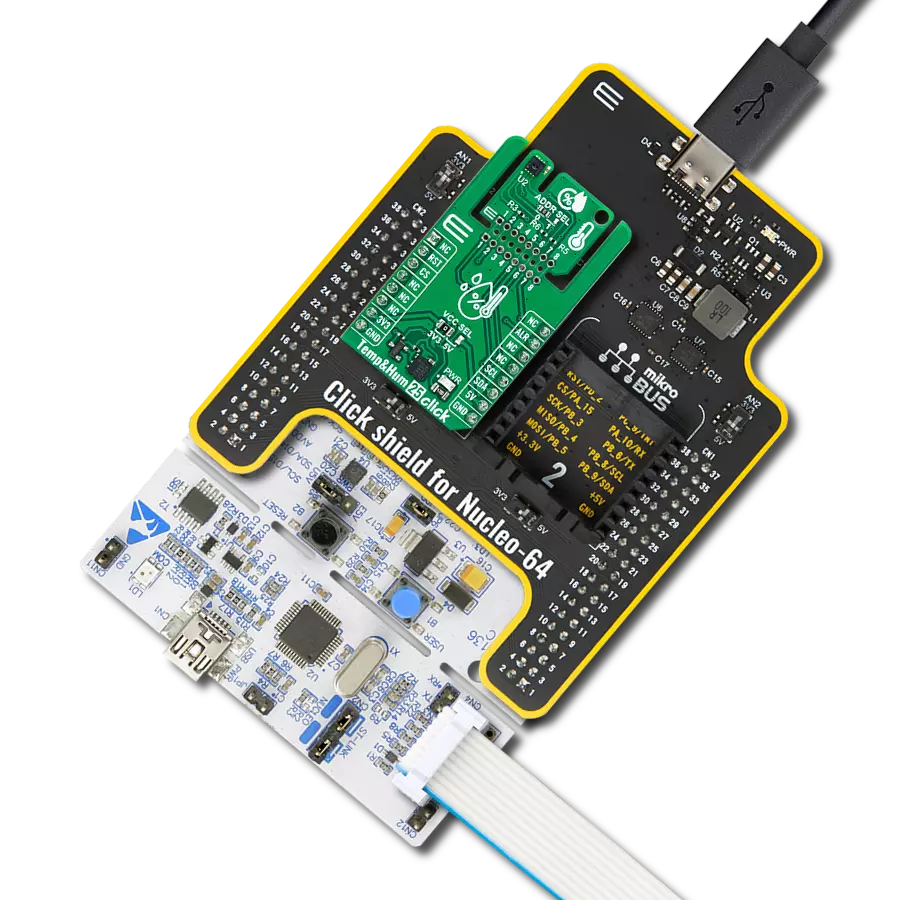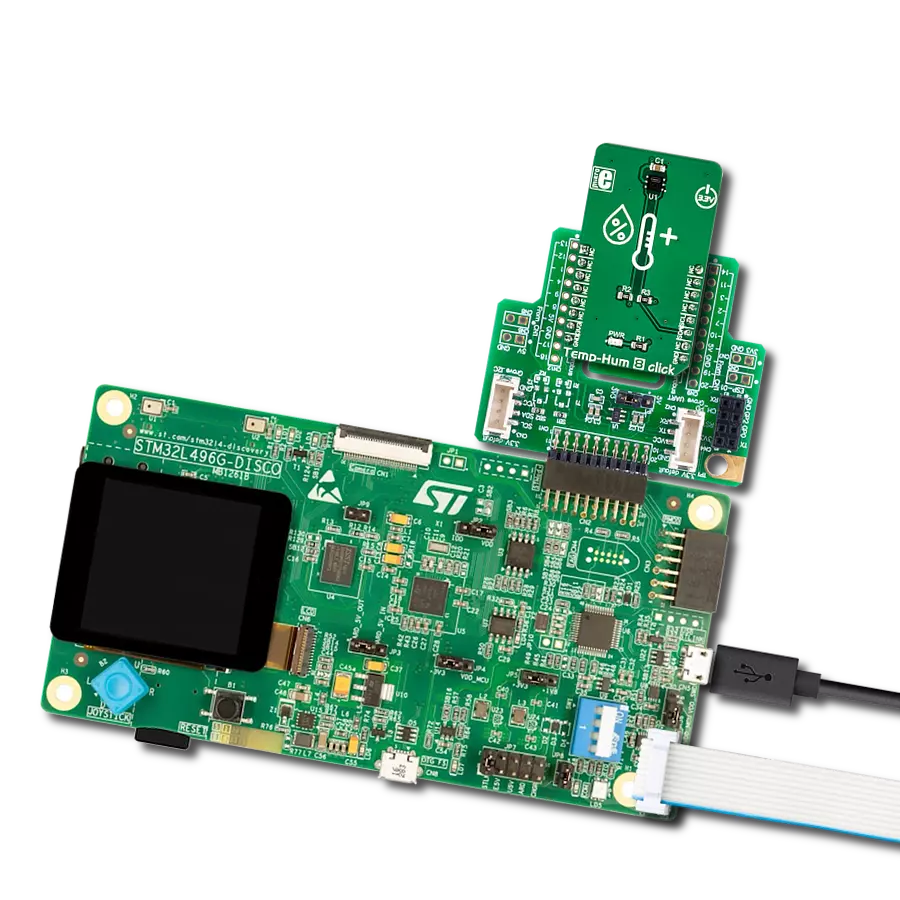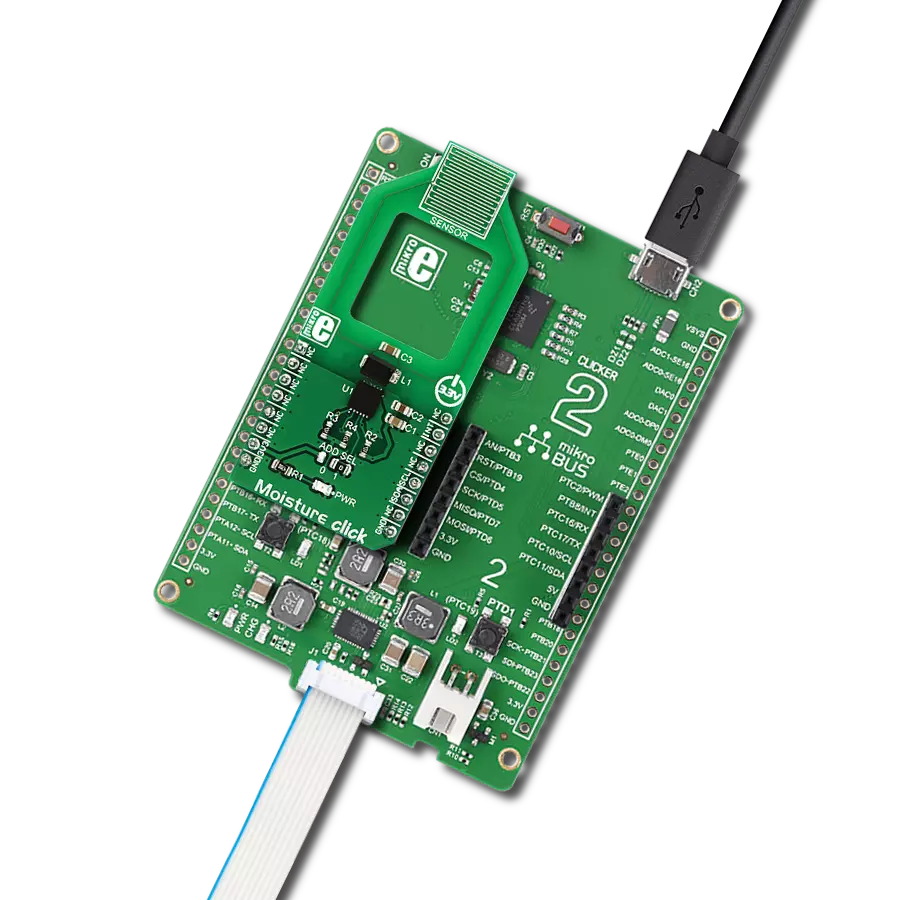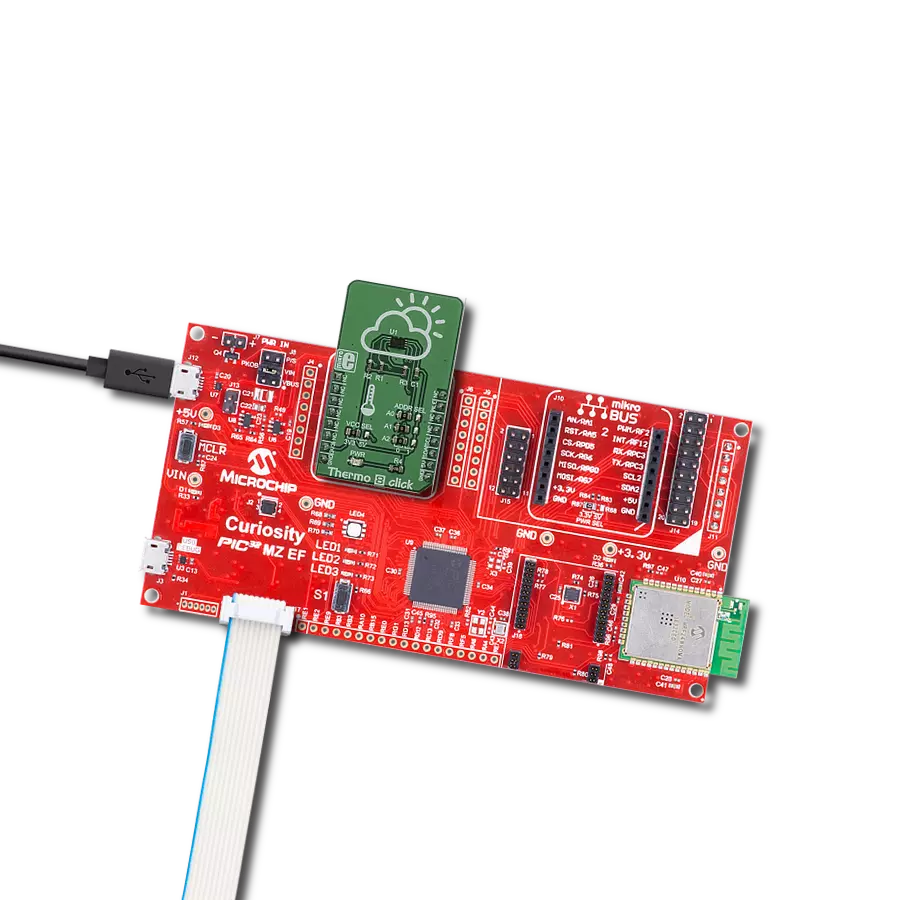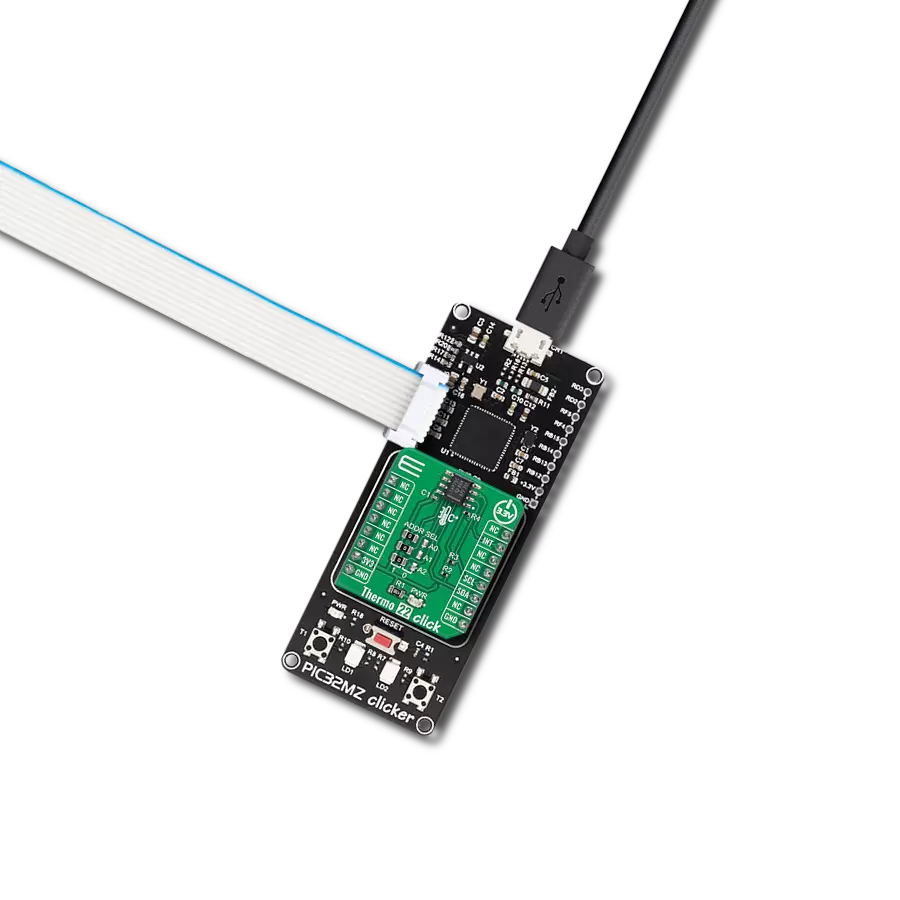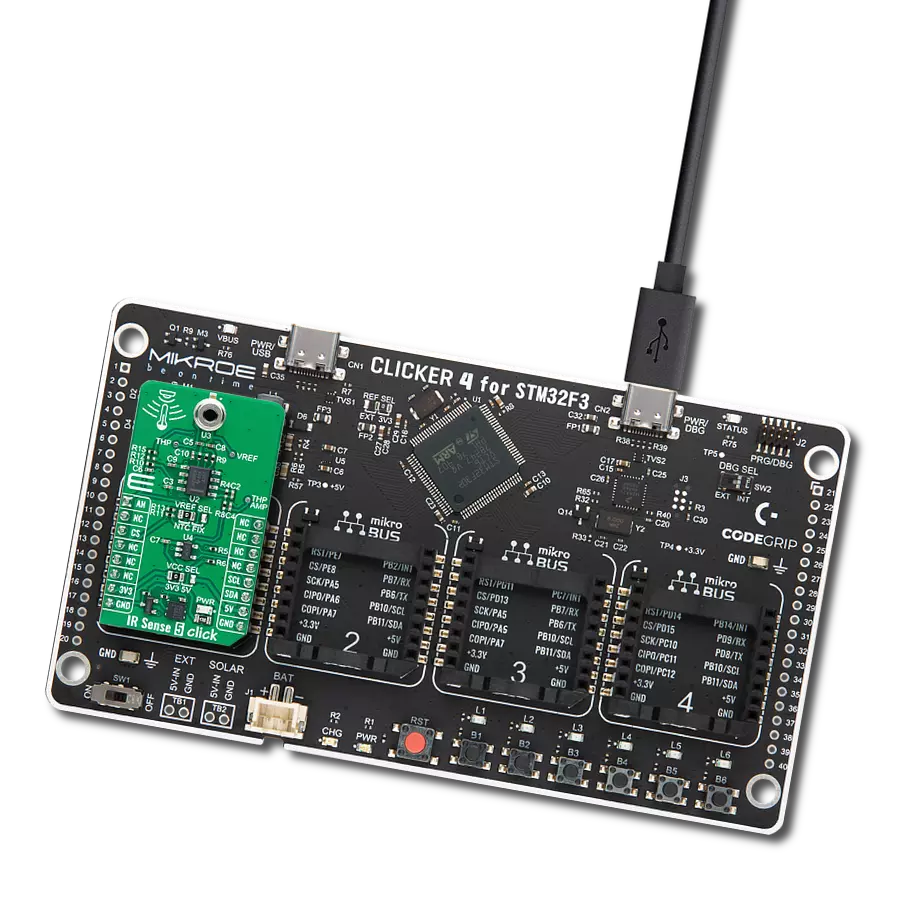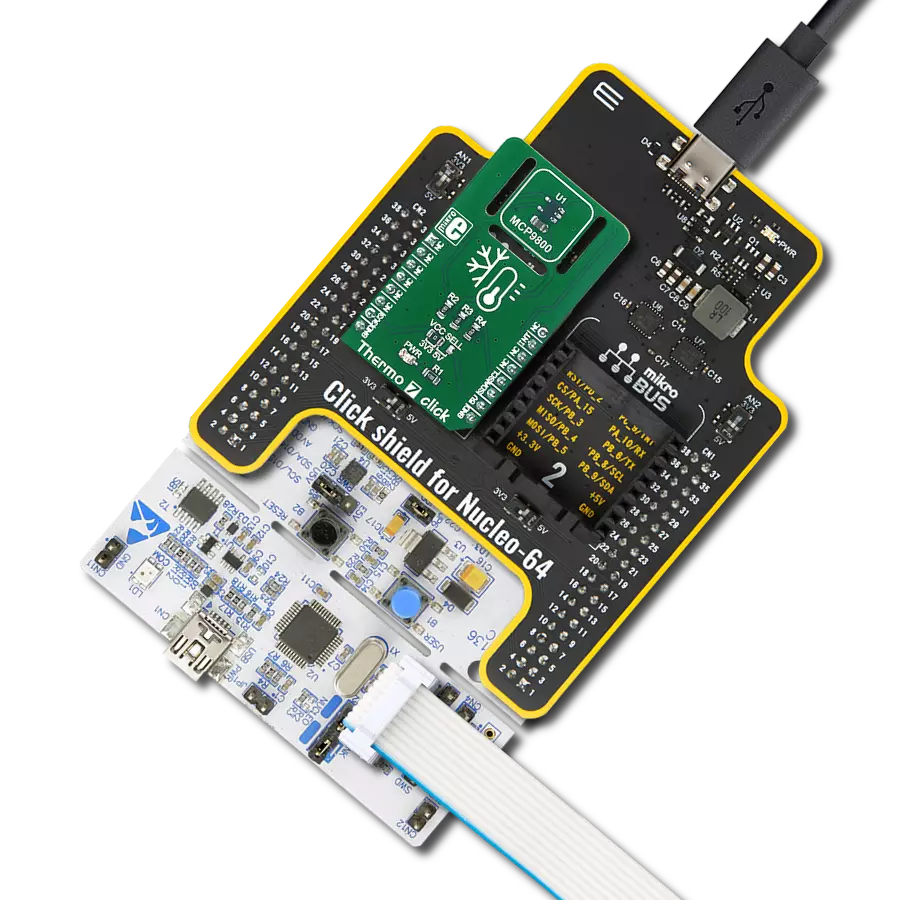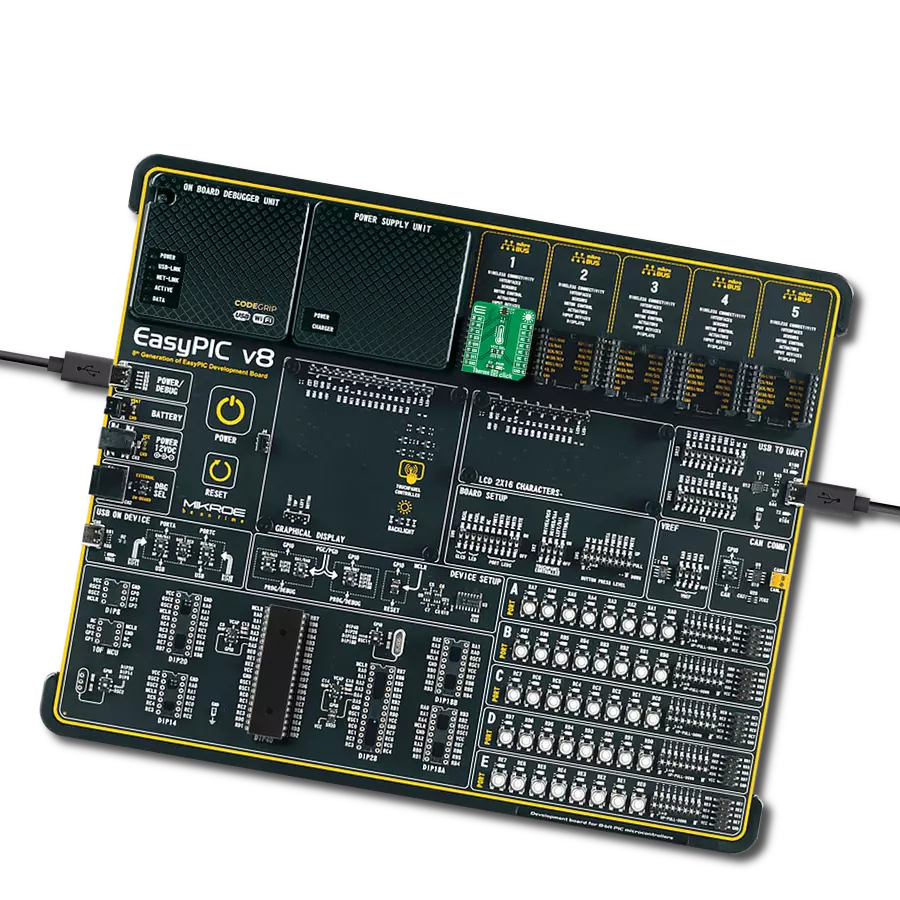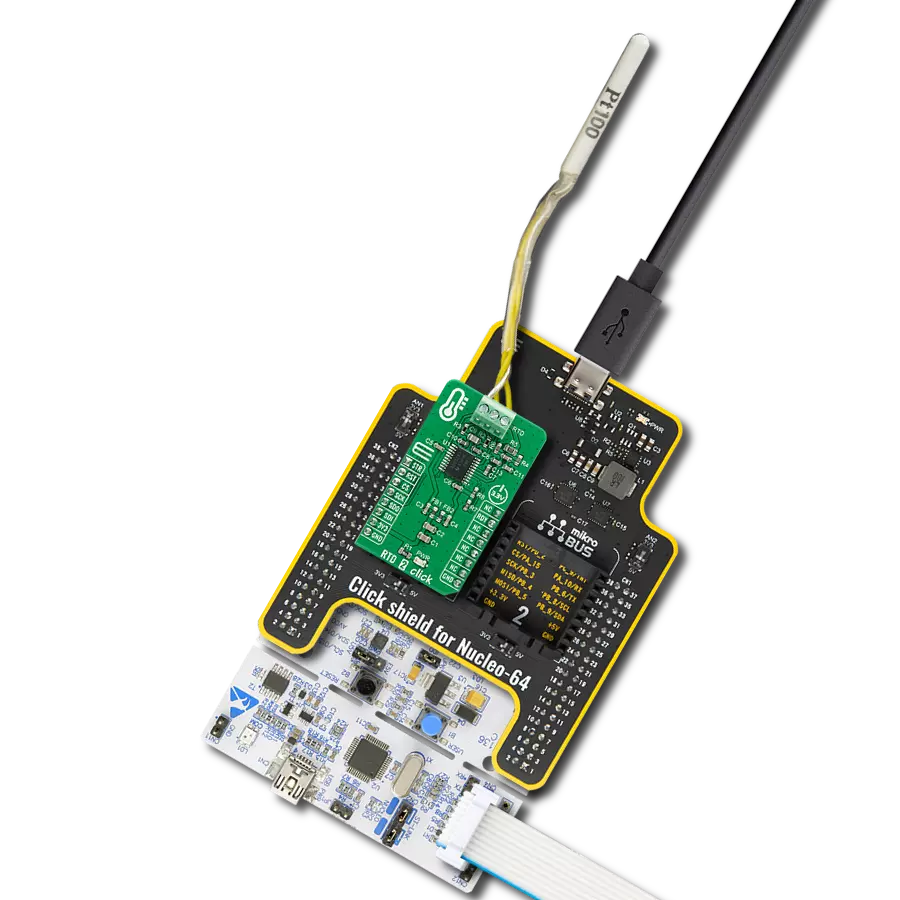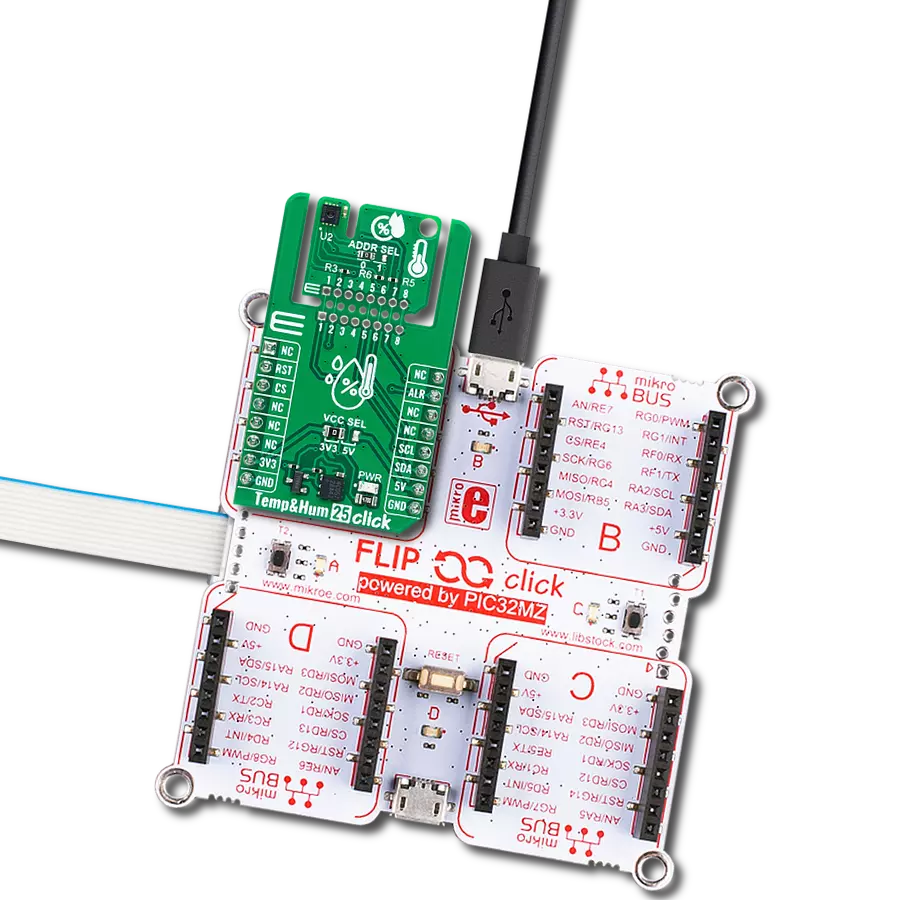Our technology and your comfort are perfectly aligned, bringing you the best in climate control solutions.
A
A
Hardware Overview
How does it work?
Temp&Hum 12 Click is based on the HDC2080, a Low Power Humidity and Temperature Digital Sensor from Texas Instruments. This sensor is factory calibrated to 2% relative humidity and 0.2°C temperature accuracy. It has an integrated heating element that is used to evaporate condensation, protecting the sensor that way. This heating element can be simply activated by setting a bit in the appropriate register. In the case when the heater is powered on, the typical current consumption is about 90mA. Internally, two sensors are connected to the two separated ADC sections, which can be set to sample measurements with the resolution of 9, 11 or 14 bits, based on the measurement time. The OTP memory holds the calibration coefficients that are applied to the measured value and the results are stored on the output registers, in the MSB/LSB format. These values are
then used in formulas found in the HDC2080 datasheet so that the final temperature or relative humidity data can be calculated. It is also possible to correct the offsets with custom values. HDC2080 IC uses the I2C protocol to communicate with the host MCU. Its I2C bus pins are routed to the mikroBUS™ I2C pins and are pulled to a HIGH logic level by the onboard resistors. The final I2C address of this IC is already determined by setting ADDR pin to GND (LOW logic level for 0). Temp&Hum 12 click supports programable temperature and humidity thresholds in the HDC2080 allow the device to send a hardware interrupt to wake up the microcontroller when necessary. In addition, the power consumption of the HDC2080 is significantly reduced, which helps to minimize self-heating and improve measurement accuracy. More information about these registers can be
found in the HDC2080 datasheet. HDC2080 IC itself is a very low power consumption device and it can work in two modes: sleep and active (measurement) mode. The device enters the sleep the mode as soon as possible, to save power. This makes the HDC2080 suitable to be used in battery-powered applications. In these applications, the HDC2080 spends most of the time in sleep mode, with the typical current consumption of 50 nA. While in the active mode, measurement can be configured either to automatic (with the predefined output data rate) or on-demand. In the automatic mode, the measurement is triggered in predefined time intervals, while on-demand measurement happens whenever the I2C command is sent. As soon as the single measurement is finished, the device falls back to the sleep mode.
Features overview
Development board
Fusion for TIVA v8 is a development board specially designed for the needs of rapid development of embedded applications. It supports a wide range of microcontrollers, such as different 32-bit ARM® Cortex®-M based MCUs from Texas Instruments, regardless of their number of pins, and a broad set of unique functions, such as the first-ever embedded debugger/programmer over a WiFi network. The development board is well organized and designed so that the end-user has all the necessary elements, such as switches, buttons, indicators, connectors, and others, in one place. Thanks to innovative manufacturing technology, Fusion for TIVA v8 provides a fluid and immersive working experience, allowing access
anywhere and under any circumstances at any time. Each part of the Fusion for TIVA v8 development board contains the components necessary for the most efficient operation of the same board. An advanced integrated CODEGRIP programmer/debugger module offers many valuable programming/debugging options, including support for JTAG, SWD, and SWO Trace (Single Wire Output)), and seamless integration with the Mikroe software environment. Besides, it also includes a clean and regulated power supply module for the development board. It can use a wide range of external power sources, including a battery, an external 12V power supply, and a power source via the USB Type-C (USB-C) connector.
Communication options such as USB-UART, USB HOST/DEVICE, CAN (on the MCU card, if supported), and Ethernet is also included. In addition, it also has the well-established mikroBUS™ standard, a standardized socket for the MCU card (SiBRAIN standard), and two display options for the TFT board line of products and character-based LCD. Fusion for TIVA v8 is an integral part of the Mikroe ecosystem for rapid development. Natively supported by Mikroe software tools, it covers many aspects of prototyping and development thanks to a considerable number of different Click boards™ (over a thousand boards), the number of which is growing every day.
Microcontroller Overview
MCU Card / MCU
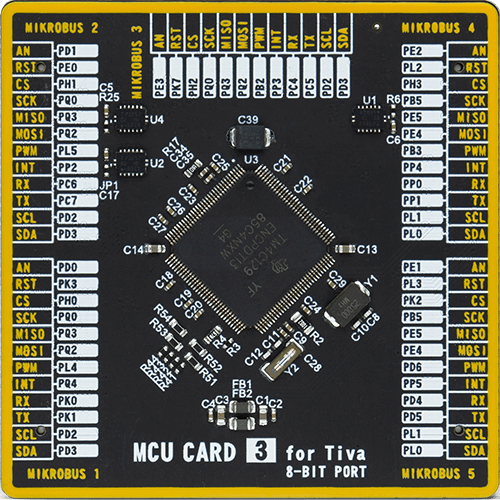
Type
8th Generation
Architecture
ARM Cortex-M4
MCU Memory (KB)
512
Silicon Vendor
Texas Instruments
Pin count
128
RAM (Bytes)
262144
Used MCU Pins
mikroBUS™ mapper
Take a closer look
Click board™ Schematic

Step by step
Project assembly
Software Support
Library Description
This library contains API for Temp&Hum 12 Click driver.
Key functions:
temphum12_get_temperature- Temperature datatemphum12_get_humidity- Relative Huminidy datatemphum12_get_intrrupt_state- Interrupt state
Open Source
Code example
The complete application code and a ready-to-use project are available through the NECTO Studio Package Manager for direct installation in the NECTO Studio. The application code can also be found on the MIKROE GitHub account.
/*!
* \file
* \brief TempHum12 Click example
*
* # Description
* This application measures temperature and humidity.
*
* The demo application is composed of two sections :
*
* ## Application Init
* Initializes driver init and configuration device for measurement.
*
* ## Application Task
* Reads Temperature and Humidity data and this data logs to the USBUART every 1 sec.
*
* \author MikroE Team
*
*/
// ------------------------------------------------------------------- INCLUDES
#include "board.h"
#include "log.h"
#include "temphum12.h"
// ------------------------------------------------------------------ VARIABLES
static temphum12_t temphum12;
static log_t logger;
// ------------------------------------------------------ APPLICATION FUNCTIONS
void application_init ( void )
{
log_cfg_t log_cfg;
temphum12_cfg_t cfg;
uint16_t tmp;
uint8_t read_reg[ 2 ];
/**
* Logger initialization.
* Default baud rate: 115200
* Default log level: LOG_LEVEL_DEBUG
* @note If USB_UART_RX and USB_UART_TX
* are defined as HAL_PIN_NC, you will
* need to define them manually for log to work.
* See @b LOG_MAP_USB_UART macro definition for detailed explanation.
*/
LOG_MAP_USB_UART( log_cfg );
log_init( &logger, &log_cfg );
log_info( &logger, "---- Application Init ----" );
// Click initialization.
temphum12_cfg_setup( &cfg );
TEMPHUM12_MAP_MIKROBUS( cfg, MIKROBUS_1 );
temphum12_init( &temphum12, &cfg );
temphum12_default_cfg( &temphum12 );
Delay_ms ( 1000 );
Delay_ms ( 500 );
log_printf( &logger, "--- Start measurement ----\r\n" );
}
void application_task ( void )
{
float temperature;
float humidity;
temperature = temphum12_get_temperature( &temphum12,
TEMPHUM12_TEMP_IN_CELSIUS );
log_printf( &logger, "Temperature: %.2f \r\n", temperature );
Delay_1sec( );
humidity = temphum12_get_humidity( &temphum12 );
log_printf( &logger, "Humidity: %.2f \r\n", humidity );
log_printf( &logger, "-----------------------------\r\n" );
Delay_1sec( );
}
int main ( void )
{
/* Do not remove this line or clock might not be set correctly. */
#ifdef PREINIT_SUPPORTED
preinit();
#endif
application_init( );
for ( ; ; )
{
application_task( );
}
return 0;
}
// ------------------------------------------------------------------------ END
Additional Support
Resources
Category:Temperature & humidity


















